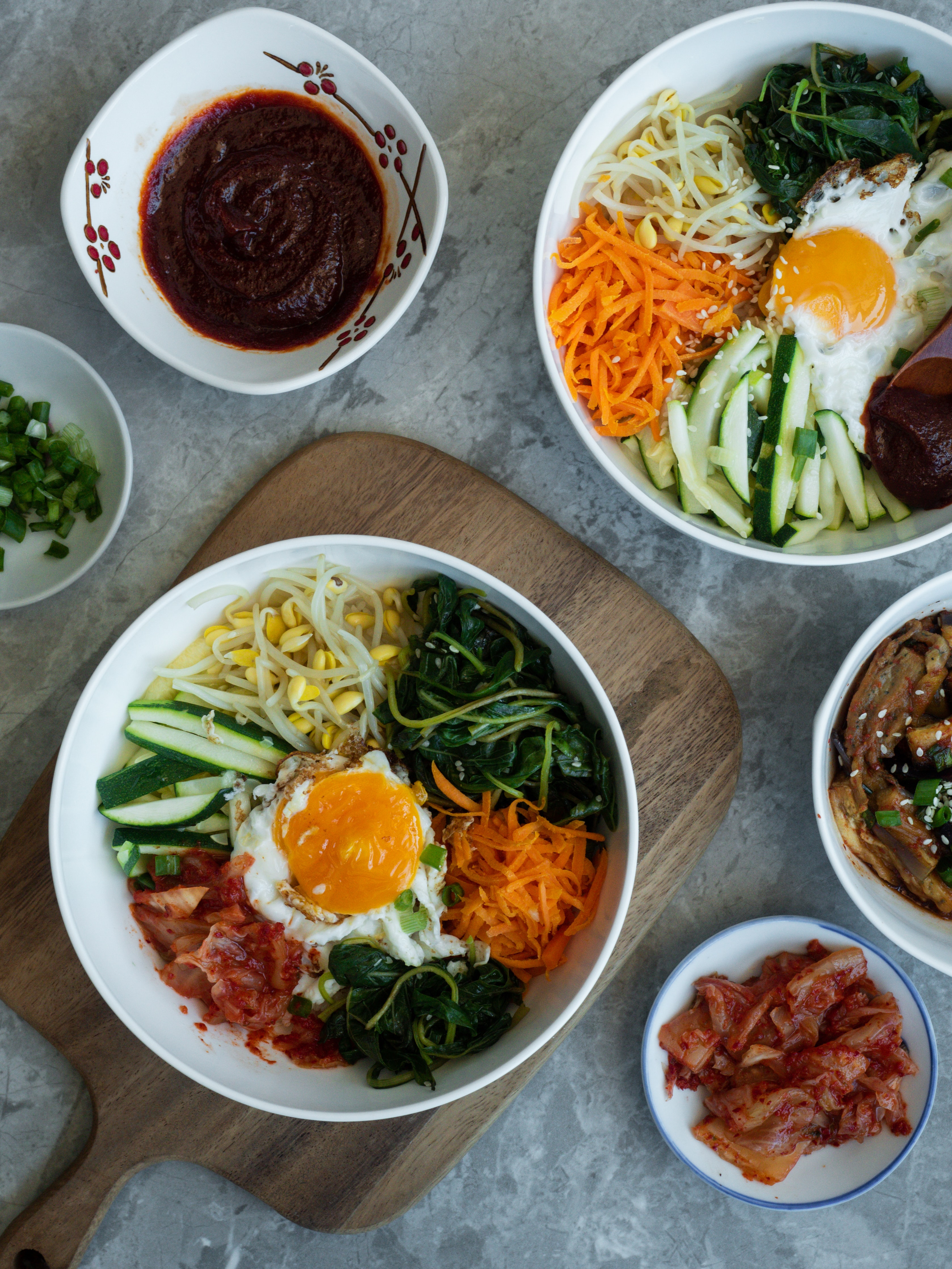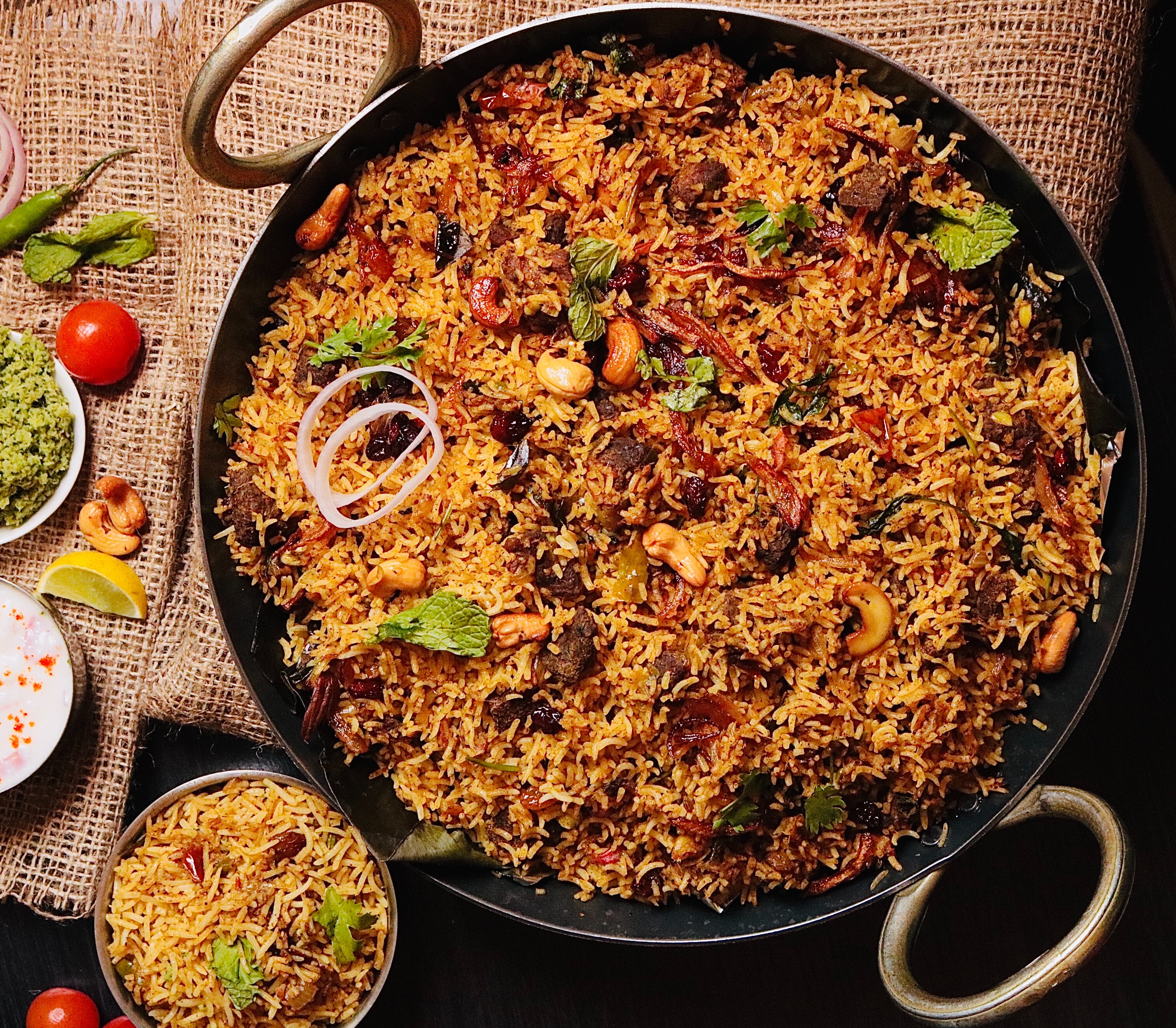Many dishes in traditional Korean cuisine feature connections between beauty and culture, philosophy, and health. The visual appearance of a food item in the various ingredients used and the ways it is served can be a subtle yet meaningful suggestion of the taste, nutrition, and intention behind it. Tangpyeong-chae is a salad of mung bean starch jelly sliced almost like noodles in appearance, plus various seasoned vegetables like watercress, water dropwort, mugwort, and mung bean sprouts, and sometimes meat or seafood. The name of this dish originates from a policy called tangpyungchaek introduced during the Joseon dynasty by then-rulerruling King Yeongjo that characterized the goal of harmony in the elimination of political party conflicts and corruption (Chung et al. 181). Japchae is a stir-fry dish composed of glass noodles (made from sweet potato starch) mixed with different vegetables like carrot, onion, bell pepper, spinach, and mushroom, meat such as beef or pork, as well as soy sauce and sesame oil. This dish, like tangpyeong-chae, also stems from the Joseon period where it was prepared only with vegetables, particularly cucumber, radish, and shiitake mushroom at the time, and was initially part of the cuisine of the Korean royal court before it became enjoyed by commoners as well (Chung et al. 181). These dishes possess characteristic mixing of ingredients that possess their own distinctive flavors, textures, and colors yet go well together, demonstrating the beauty of harmony or balance between individual elements. Another concept of beauty comes from the seasonality of foods, an important aspect in Korean cuisine with an extensive agricultural history, which is in turn associated with health and cultural customs (Chung et al. 186). Tteok is a category of Korean rice cake that is often prepared for various seasonal traditions or celebrations like for the Lunar New Year and Mid-Autumn Festival. Hwajeon are a type of tteok that are glutinous rice flour pancakes with flowers pressed into them and doused in honey. The flowers or other toppings pressed into these pancakes, like dried jujubes or pine nuts, are influenced by whatever is in season, for example azalea flower for hwajeon prepared in the spring, chrysanthemum flower in autumn, and mugwort leaf in the winter (Chung et al. 188). Other seasonal dishes are also prepared for their nutritional benefits such as samgye-tang, a restorative ginseng and chicken soup for hot summers. Another seasonal health food is osinban, a dish made from a medley of fresh vegetables and herbs available in early spring, such as green onion, water dropwort, bittercress, radish, and ginger, which altogether provide essential vitamins to recuperate from the scarcity of winter (Chung et al. 186). It is typically eaten during the start of spring in the lunar calendar which is in late December or early January. The aesthetics of harmony and the seasons are fundamental aspects exhibited in many traditional Korean dishes such as in the ones discussed.
Works Cited
Chung, Hae-Kyung, et al. “Aesthetics of Korean Foods: The Symbol of Korean Culture.” Journal of Ethnic
Foods, vol. 3, no. 3, 2016, pp. 178-88. Crossref, https://doi.org/10.1016/j.jef.2016.09.001.






